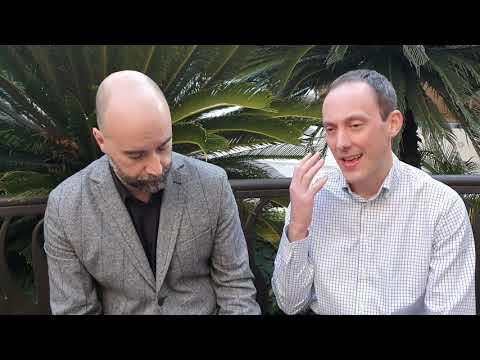-
Resilience, regulation, recovery – and the reality facing cyber leaders
03 Oct 2025
-
85 Years Since Fighter Command VC Flight From MOD Boscombe Down
14 Aug 2025
-
Beyond the wire: what Bosnia taught us about comms risk
29 Jul 2025
-
From paper to battlespace: how to build a PACE plan that works
29 Jul 2025
-
Why tactical communications fail - and how to build resilience with PACE
29 Jul 2025
Inside Access: Consumer Electronics Show 2020 - part three
10/01/2020

Batteries & Power Sources
Throughout the three days at CES we have seen some interesting developments in the areas of batteries as well as power management. New to the market this year are the developments in organic batteries. While designed for low voltage/amp applications, it is possible to see that organic battery sources will become very usable for wearable technology. The primary use cases have been designed for the health sector; for example with disposable, digital pregnancy tests. However, there is a need to look at more sustainable battery technology for wider markets and the case is no different in defence as newer, smaller technology is moved into the field.
However, the area of greater interest for our market is wireless power transfer. One British SME has developed a very small format receiver (smaller than a credit card) which, when coupled to the transmitter (again very small), could power multiple receivers from a range of up to 10m. Clearly the technology is not applicable for high power applications, but there is a clear use case in wearable technology on soldiers to enable the mission.
Additionally, it is looking more likely that wearables and other technology will be interwoven into clothes. This technology will need to be powered and a source included in the design. Using wireless transfer technology like this, then means that embedding rechargeable cells into the clothing is now very conceivable and that they could even wirelessly charge when soldiers are in a land vehicle for example. The technology is available for integration and this is an area which that QinetiQ will look to collaborate with our customers and partners on to create a technology demonstrator and prove the concept.
Artificial Intelligence and Near Real-time
While there has been a significant focus in the field of machine learning within the artificial intelligence (AI) domain; it was interesting to see a number of developments around Natural Language Processing (NLP). Some of these developments included in-ear voice enhancers as well as near real-time language translation. This type of technology has applicability in many sectors and you can see how it could be extremely useful technology in the Defence sector. The most exciting technology in this area, however, came from a small British company that has developed an AI solution that conducts targeted voice recording. In the example showcased, all other background noise and voices were suppressed, with the exception of the one voice that had been targeted. Clearly the applicability of this technology for deep surveillance is significant here and one that QinetiQ will be actively taking back to the defence market in collaboration.
Wellbeing
An overarching theme that has been woven throughout CES is wellbeing. While limitless technologies for the consumer keep arriving in this space; there has been a clear shift to look more widely at wellbeing technology for enterprises. This ranges from massage chairs and sleep pods through to electronic headband technology designed for stress relief and voice and AI enabled environments to strengthen productivity at the office or as home workers. The level of R&D being invested into this area will continue to grow as society continues to struggle with high degrees of cognitive burden and over-stimulation through consumer technology; QinetiQ certainly works on projects with clients and partners around the human factors and impacts of technology on people. It’s perhaps somewhat ironic that technology solutions are being developed to manage the side-effects of consumer technology! Maybe a better answer would be regular “digital detoxes” as a policy in the working environment?
If you’d like to hear more about what the team saw on day three of the show, David Taylor, Chief Solutions Architect at QinetiQ joins me in the video below.
